Related Research Articles
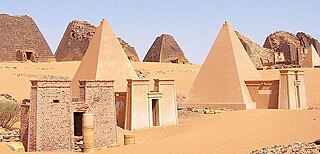
Meroë was an ancient city on the east bank of the Nile about 6 km north-east of the Kabushiya station near Shendi, Sudan, approximately 200 km north-east of Khartoum. Near the site is a group of villages called Bagrawiyah. This city was the capital of the Kingdom of Kush for several centuries from around 590 BC, until its collapse in the 4th century AD. The Kushitic Kingdom of Meroë gave its name to the "Island of Meroë", which was the modern region of Butana, a region bounded by the Nile, the Atbarah and the Blue Nile.

Natakamani, also called Aqrakamani, was a king of Kush who reigned from Meroë in the middle of the 1st century CE. He ruled as co-regent together with his mother Amanitore. Natakamani is the best attested ruler of the Meroitic period. He and Amanitore may have been contemporaries of the Roman emperor Nero.

Amanishakheto was a queen regnant (kandake) of Kush who reigned in the early 1st century AD. In Meroitic hieroglyphs her name is written "Amanikasheto". In Meroitic cursive she is referred to as Amaniskheto qor kd(ke) which means Amanishakheto, Qore and Kandake.
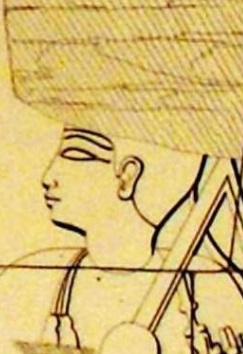
Teqorideamani was the King of Kush who was ruling in AD 253. His reign may be dated from 245/246 to sometime after 265/266. His throne name, attested in Egyptian hieroglyphics, was Ḫpr-kꜣ-Rꜥ, meaning "Ra is one whose ka came into being". Rendered in Meroitic, it is Natakamani or Ariteñyesebokhe. His given name, Teqorideamani, is attested in Meroitic hieroglyphs in his tomb inscription.
Shorkaror was a king of Kush who ruled from Meroë in the second half of the 1st century AD. Shorkaror is attested as king in two inscriptions in Amara and in a large rock carving at Gebel Qeili. His identification as a king has sometimes been doubted, though the rock carving depicts him with royal regalia and attire. The carving is near to the trade route to Kassala and is the easternmost inscription of the Meroitic kings found so far.

Shanakdakhete, also spelled Shanakdakheto or Sanakadakhete, was a queen regnant of the Kingdom of Kush, ruling from Meroë in the early first century AD. Shanakdakhete is poorly attested, though is known to have constructed a temple in Naqa.

Amanikhareqerem was a King of Kush who ruled during the late 1st century AD. In older research he was placed into the 2nd century AD. or possibly earlier. His chronological position means that he may have succeeded Shorkaror and preceded Amanitenmemide. It is impossible to securely identify where Amanikhareqerem was buried. It has been suggested that he was buried in the pyramid Beg. N 16 in Meroë.
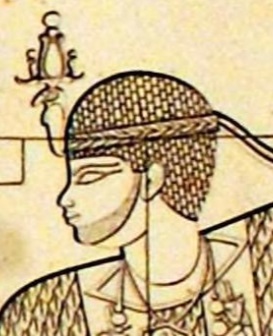
Tarekeniwal was a Kushite King of Meroë of whom little is known. He likely reigned in the second half of the 2nd century AD. Tarekeniwal is only known from his pyramid in Meroe. His name appears on the pylon of the cult chapel in front of the pyramid, which was in modern times restored. The chapel and its decoration is still well preserved.

Amanitore, also spelled Amanitere or Amanitare, was a queen regnant of the Kingdom of Kush, ruling from Meroë in the middle of the 1st century CE. She ruled together with her son, Natakamani. The co-reign of Amanitore and Natakamani is a very well attested period and appears to have been a prosperous time. They may have been contemporaries of the Roman emperor Nero.

The Kingdom of Kush, also known as the Kushite Empire, or simply Kush, was an ancient kingdom in Nubia, centered along the Nile Valley in what is now northern Sudan and southern Egypt.
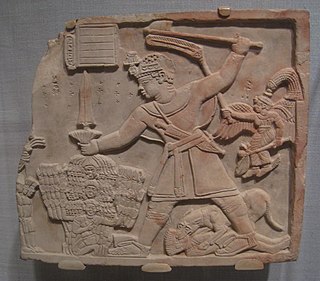
Arikhankharer was crown prince of the Meroitic Kingdom of Kush in the first half of the 1st century AD.

The Pyramids of Meroë are a large number of Nubian pyramids, encompassing three cemeteries near the ancient city of Meroë. The Meroë pyramids date to the later stage of the Kingdom of Kush and were burial places for Kushite monarchs, other members of the royal family, and important officials and dignitaries.

Amanikhabale was a King of Kush who probably ruled in the first half of the 1st century CE. Amanikhabale is known from inscriptions from Kawa, Basa, and Naqa, as well as a broken stela from Meroë. The quality and scale of the monuments on which Amanikhabale's inscriptions have been found, as well as their geographical distribution, indicates that he had a prosperous reign.
Adikhalamani was a king of Kush, ruling from Meroë in the first half of the 2nd century BCE.
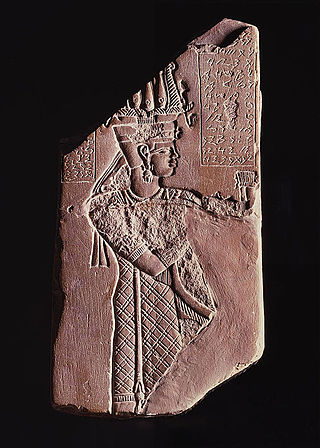
Tanyidamani was a Kushite king of Meroë who ruled in the second half of the 2nd century BCE. He was most likely the son of king Adikhalamani and Queen Nahirqo.

Amanipilade is the name conventionally attributed to a Kushite queen regnant buried in pyramid Beg N. 25 in Meroë. Amanipilade ruled the Kingdom of Kush from Meroë in the middle of the fourth century AD. Circumstantial and indirect evidence suggests that she might have been the last ruler of the kingdom.

Amanitaraqide was a king of the kingdom of Kush, ruling from Meroë. The timeframe of his reign and the location of his burial are uncertain and disputed.

Nahirqo is the name attributed to a Kushite queen regnant buried in pyramid Beg N. 11 in Meroë. Nahirqo is the earliest known woman to have ruled the Kingdom of Kush, reigning in the middle second century BC. Prior to her own reign, Nahirqo is believed to have been the queen consort of King Adikhalamani.
Tabirqo was a king of Kush, ruling from Meroë in the first half of the 2nd century BCE. Tabirqo's name is known only from his tomb, Beg. N 9 in Meroë.
References
- 1 2 Kuckertz, Josefine (2021). "Meroe and Egypt". UCLA Encyclopedia of Egyptology: 6.
- 1 2 3 4 Eide, Tormod; Hägg, Tomas; Holton Pierce, Richard; Török, László (1998). Fontes Historiae Nubiorum: Textual Sources for the History of the Middle Nile Region Between the Eighth Century BC and the Sixth Century AD: Vol. III: From the First to the Sixth Century AD. University of Bergen. pp. 998, 1049. ISBN 82-91626-07-3.
- ↑ J.D. Fage, and R.A. Oliver, The Cambridge history of Africa, 2002
- ↑ Welsby, Derek. The Kingdom of Kush: The Napatan and Meroitic Empires, pg 199 - 200. Markus Wiener Publishers, 1999
